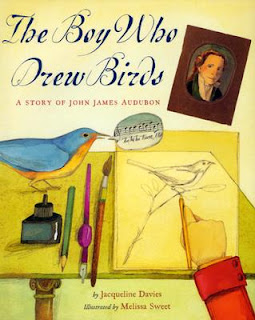
The second grade artists have finished up their bird watercolors and are now working on creating bird sculptures! Each bird actually started out using the pinch pot method in clay. The features of the birds were carefully pulled out and texture was added using various tools. The artists chose a piece of wood as the sculpture base and had to decide how their bird would balance. The clay birds were kiln fired, glazed, fired again, and then carefully perched. It was fun to see what kind of wood the children were drawn to- some organic and rough others smooth and geometric.

Last year I made a fun trip to the workshop of NCS family Willard Woodrights to collect pieces of scrap wood for the art room. They have a passionate interest in using reclaimed, locally harvested urban hardwood whenever possible and we are very fortunate to have these gorgeous pieces to use for our art projects. I love their philosophy and you can read more about what they do here.


































